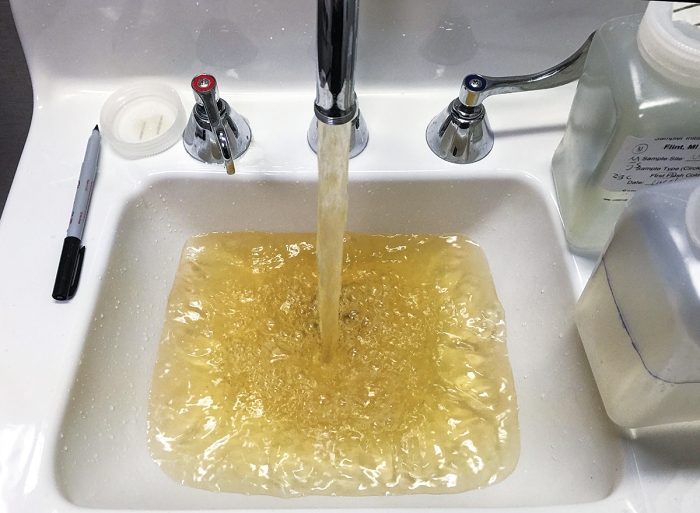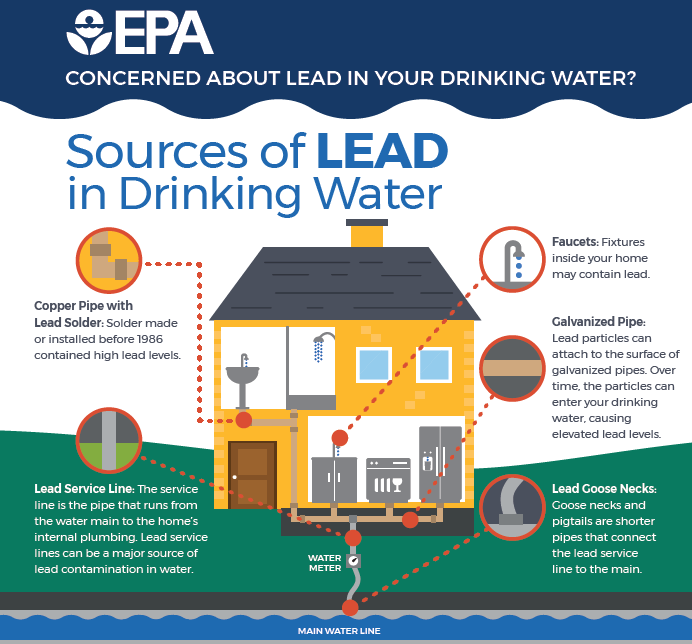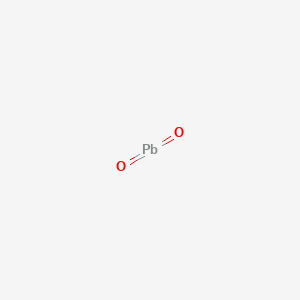Did you know that your well water is actually groundwater. EPA sets legal limits on over 90 contaminants in drinking water.

Pdf Lead Iv Oxide Formation And Stability In Drinking Water Distribution Systems Project 4211 Semantic Scholar
For public water systems their representatives and laboratories to submit drinking water information to us.

Lead dioxide in drinking water. Researchers have assembled a high-quality Isoetes genome that furthers understanding how these aquatic plants regulate CAM photosynthesis to compete for carbon dioxide underwater and how that regulation differs from. Call 303-692-3308 for the following high results potential acute situations. Many heavy metals were reported in drinking water Drinking water is mainly produced from surface water groundwater and desalinating seawater with desalination satisfying a significant fraction of the drinking water demand in water-scarce regions Kim et al 2015Bottled water spring water and harvested rainwater are also used as drinking water in these regions Sullivan 2011.
They are used by MassDEP when evaluating the potential health risks from chemicals in drinking water when no MMCL or ORSG is available. The ingestion or absorption of water or water vapor as the result of drinking cooking dishwashing hand washing bathing. Drinking water supplies in the United States are among the safest in the world.
The levels of chlorite in water reported in one study ranged from 32 to 70 mglitre Michael et al 1981. The genome of this humble quillwort Isoetes taiwanensis could hold secrets to help make crops use water or carbon dioxide more efficiently. Lead can enter drinking water when plumbing materials that contain lead corrode especially where the water has high acidity or low mineral content that corrodes pipes and fixtures.
Lead contamination is the most troubling in a series of water problems that have plagued Flint since the summer of 2014. Groundwater is water that occupies void spaces between soil particles or cracks in rock below the land surface. Drinking Water Standards for Ohio Public Water Systems Page 1 of 4 Drinking Water Standards for Ohio Public Water Systems September 2018 I.
Neurobehavioural effects lowered auditory startle amplitude decreased exploratory activity decreased absolute brain weight altered liver weights. Drinking water chlorination has contributed to a dramatic decline in waterborne disease rates and increased life expectancy in the United States. By-product of drinking water disinfection with chlorine dioxide.
Congress passed the Reduction of Lead in Drinking Water Act in 2011. Chlorite formation should be controlled by respecting the maximum feed dose of 12 mgL of chlorine dioxide and managing monitoring formation in. The most common sources of lead in drinking water are lead pipes faucets and fixtures.
EPA has issued standards for chlorine monochloramine and chlorine dioxide. 0 50 100 150 200 Soft Moderate Hard. From a drinking water perspective the almost universal use of lead compounds in plumbing fittings and as solder in water distribution systems is important.
Primary Standards Ohio Administrative Code Chapter 3745-81 Inorganic Chemicals Maximum Contaminant Level MCL mgL Antimony 0006 Arsenic 0010 Asbestos 7 million fibersliter longer than 10 μm Barium 2 Beryllium 0004 Cadmium 0005 Chromium 01. If you are in a remote area without toilets bury human waste poop 8 inches deep and at least 200 feet away from lakes rivers and other natural waters. Health basis of MAC.
It required EPA to submit. The Drinking Water Protection Act was enacted on August 7 2015. EPA estimates that more than 40 million US.
MRDLs are enforceable in the same manner as maximum contaminant levels under Section 1412 of the Safe Drinking Water. Disinfection by-products EPA has. Lead is present in tap water to some extent as a result of its dissolution from natural sources but primarily from household plumbing systems in which the pipes solder.
The US EPA provides drinking water guidance in the form of Health Advisories for different durations of exposure ie one-day ten-day and lifetime. Additionally monitoring of these and other water quality parameters such as dissolved inorganic carbon alkalinity nitrate and nitrite can help a utility maintain drinking water quality in the distribution system and identify changes that can lead to corrosion. All of them were caused by corrosion in the lead and iron pipes that.
In addition to using the appropriate drinking water treatment methods listed above take these steps to protect yourself and others from waterborne illness. Lead pipes may be used in older distribution systems and plumbing. This amendment effective in 2014 tightened the definition of lead-free plumbing fixtures and fittings.
In recent years regulators and the general public have focused. In homes with lead pipes that connect the home to the water main also known as lead services lines these pipes are. However even in the US drinking water sources can become contaminated causing sickness and disease from waterborne germs such as Cryptosporidium E.
Locations of particular importance for pH monitoring in the distribution. Disinfection with chlorine dioxide has a high effectiveness in killing bacteria. The concentration of lead or copper in water that may trigger requirements for corrosion control source water treatment lead service line replacement and public educationCompliance with an action level is based on multiple samples.
Monitoring should be done in the distribution system. For chlorine dioxide a PWS is in compliance with the MRDL when daily samples are taken at the entrance to the distribution system and no two consecutive daily samples exceed the MRDL. Largely because of this success many Americans take it for granted that their tap water will be free of disease-causing organisms.
EPA rules also set water-testing. Positive coliform or. 90th Percentile for Lead and Copper.
Action level is the concentration of lead or copper in water specified in 14180c. 21 Water Chlorite occurs in drinking-water when chlorine dioxide is used for purification purposes. Under the LCR if tests show that the level of lead in drinking water is in the area of 15 ppb or higher it is advisableespecially if there are young children in the hometo replace old pipes to filter water or to use bottled water.
These are based upon non-cancer health effects. Residents use water that can contain lead in excess of 15 ppb. The legal limit for a contaminant reflects the level that protects human health and that water systems can achieve using the best available technology.
Levels of copper or lead in drinking water are a concern run water for a few minutes before using for drinking or cooking. Coli Hepatitis A Giardia intestinalis and other pathogens. Drinking water sources are subject to contamination and require.
Locational Running Annual Average LRAA for TTHM and HAA5 Total Organic Carbon TOC Removal Ratio. Section 511205b of the Data Requirements Rule DRR for the 2010 1-Hour Sulfur Dioxide SO 2 Primary National Ambient Air Quality Standard NAAQS requires that by July 1 of each year air agencies submit to the EPA Regional Administrator a report that documents the annual SO 2 emissions of each applicable source beginning with the calendar year after the effective date of the areas. 22 Food Chlorine dioxide chlorite and chlorate may occur in foodstuffs as a result of their use.
It is a local resource that originates as precipitation which.
Lead Dioxide Coating In Pipes Can Help Reduce Lead Contamination Of Drinking Water

The Pervasive Threat Of Lead Pb In Drinking Water Unmasking And Pursuing Scientific Factors That Govern Lead Release Pnas

Common Tap Water Contaminants And Other Parameters Tapp Water

How Lead Ended Up In Flint S Tap Water

Water Quality South East Water

The Pervasive Threat Of Lead Pb In Drinking Water Unmasking And Pursuing Scientific Factors That Govern Lead Release Pnas
Lead Minerals Found In Drinking Water Distribution Systems Increase Chlorine Dioxide Decay To A Single Inorganic Product Environmental Science Water Research Technology Rsc Publishing

Basic Information About Lead In Drinking Water Us Epa

